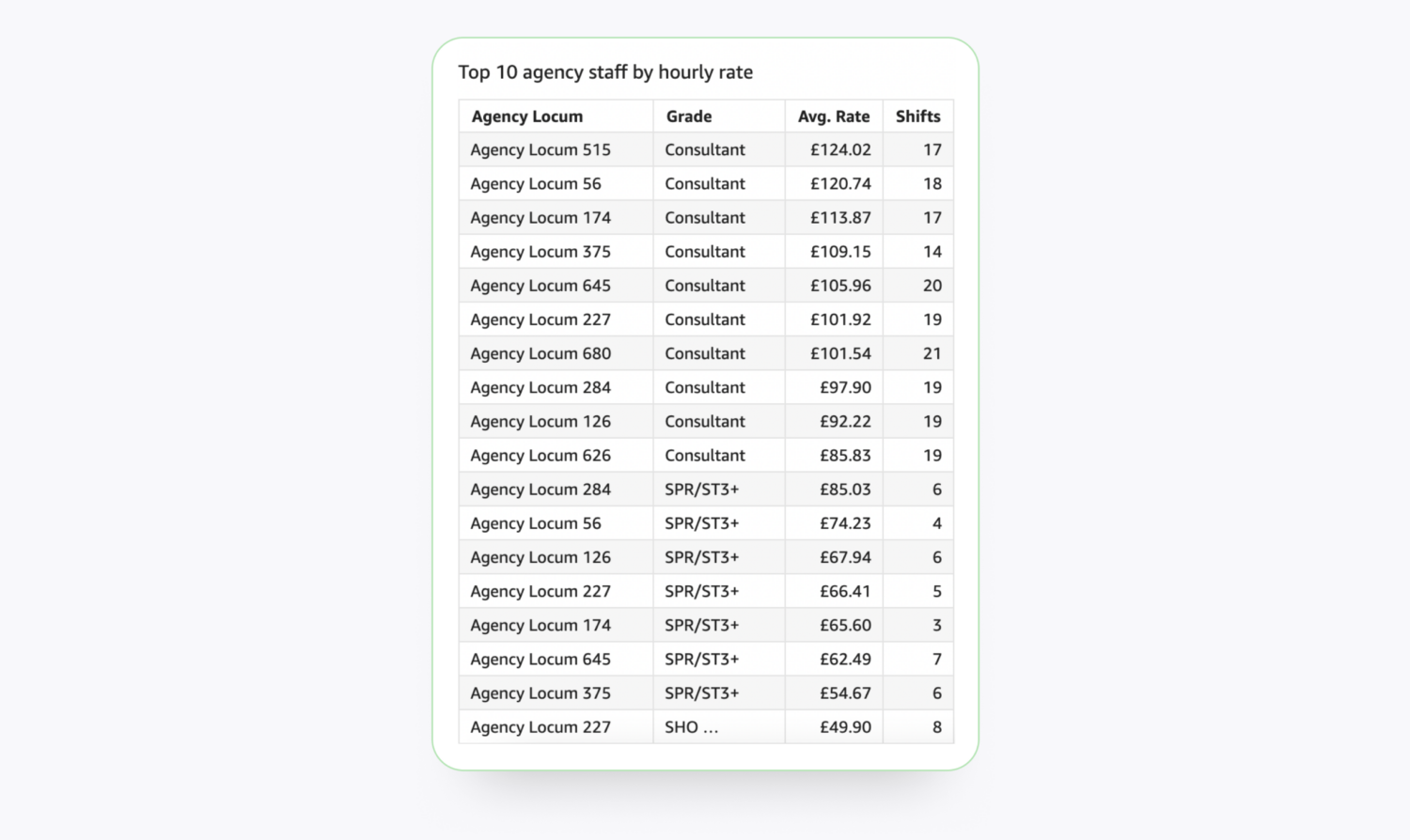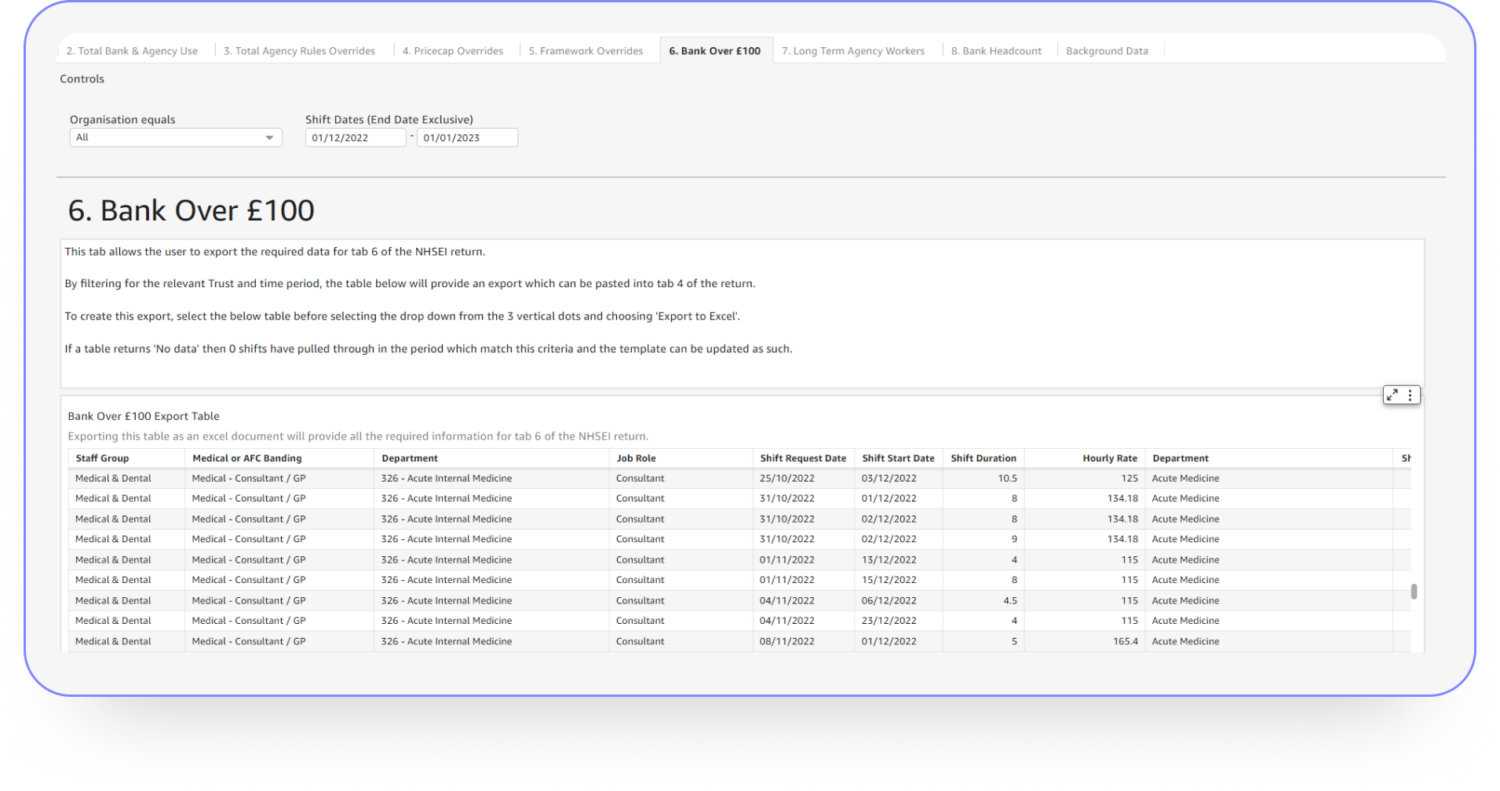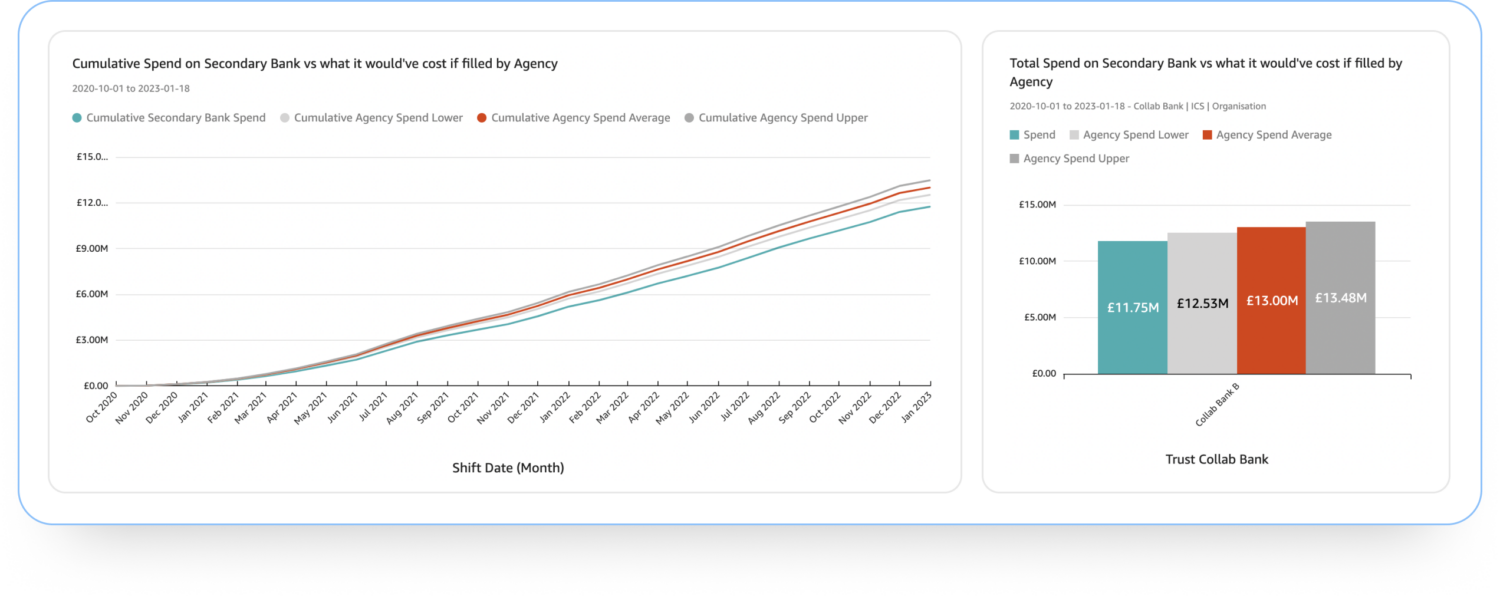Leverage Healthcare Data to Improve Financial Performance

Data is crucial to driving improvements within the NHS. Accurate collection and analysis of your workforce solutions data allows you to identify trends, track your financial metrics, and ultimately make informed decisions which can boost efficiency and better support patients.
This can be a daunting process, but tools such as Patchwork Insights can make accessing and reporting on a wealth of staffing data seamless, enabling you to get the best possible outcomes from your NHS bank, rostering and agency manager workforce solutions.
In this guide, we outline the workforce data you should ensure your organisation is able to aggregate, analyse and visualise to track staffing trends, meet NHSEI targets, and satisfy safe NHS bank staffing requirements. These insights are also crucial for organisations to progress through the e-rostering Levels of Attainment framework.
1. Comprehensive breakdown of spend across each department, grade, and temporary staffing platform
Many data reporting tools often have limited visibility, meaning staffing managers only have access to a high-level overview of total spend per department, preventing them from being able to drill down into the more detailed financial metrics and compare activity across every location, and every shift.
Platforms like Patchwork Insights provide organisations with a much more comprehensive view of overall performance, enabling teams to compare, monitor, and act upon:
- Areas of high vs low spend across different departments
- Departments with high levels of pay rate escalations
- Spending on primary vs secondary bank staff
- Frequency and cost of agency usage

Tracking these metrics should be a priority for staffing teams because they reveal areas of high spend, recurring gaps in rotas, or high use of agency staff. These are particularly costly and disruptive to the effective running of a department (a recent study saw 70% of medical registrars report frequent rota gaps), so being able to intervene early is key to improving performance, saving money, and driving better outcomes.
Furthermore, if your organisation is part of a collaborative staff bank, it’s also important that a data and reporting platform provides visibility of spend across each participating organisation. This transparency ensures you reap the benefits of increased regional collaboration, allowing staff to be deployed to areas of greatest demand.
2. Ability to identify specific worker activity to reduce overreliance on agency locums
Recent analysis has shown that the NHS paid more than £3bn to agencies to provide nurses and doctors at short notice from 2021-22. Organisations will understandably be looking for ways to reduce this significant cost, in order to meet the ambitious efficiency target laid out in the 2023 priorities and operational planning guidance: 2.2%, up from 1.1% in the Long Term Plan.
One key way of reducing temporary staffing spend is converting agency locums to your organisation’s NHS staff bank, but identifying active agency workers is not possible without visibility of booking activity and associated pay rates.
With dashboards from Patchwork Insights, organisations can easily identify the most active agency workers, and implement a conversion process to drive down spend. By employing this innovative strategy, London North West University Healthcare NHS Trust is saving an estimated £250,000 on agency premiums for every 10 agency locums converted to the staff bank. For more on this programme, click here.

3. Easy-to-use dashboards which automatically build NHSEI returns
With monthly NHSEI returns often generating a significant recurring workload for staffing teams, automating this reporting process can substantially relieve the administrative burden for staff.
Our recently released Patchwork Insights NHSEI dashboard makes managing the reporting and returns process seamless This tailored dashboard builds each return for you, enabling you to simply copy the data across into the corresponding NHSEI report section.

You also have the option to connect directly to Patchwork source data, enabling an automatic and secure export of data from Patchwork Insights into other reporting tools and spreadsheets in use across your organisation, in whichever format is required. This seamless data transfer capability is supporting our partner organisations to continue using Patchwork data to supplement their own internal reporting processes outside of our system, increasing visibility over the impact of staffing against key performance measures.
4. Track cumulative comparative spending or saving, not just total or month to month spend

Data reporting tools which fail to report on comparative and aggregate spend over time can restrict an organisation’s ability to properly track return on investment (ROI). In addition to reporting against reference data, it’s important that managers also have access to cumulative spend across a specific timeframe, as well as month to month comparisons, to easily monitor actual data against targets such as capped spend.
Patchwork Insights is able to provide a targeted view of cumulative NHS bank spend against predicted agency costs, ensuring organisations can monitor trends, as well as fluctuations. In practice, this means that organisations can see exactly what they would have spent in agency fees at a granular level, plus the total saved through filling the same shifts via NHS bank (rather than relying on standardised metrics). This level of additional insight is effectively supporting the seamless creation of board reports and other mandatory monitoring returns across our partner organisations.
5. Look forward to mitigate against future spend with predictive analysis
While it’s crucial that organisations have the tools available to easily report on and analyse previous workforce spend, being able to predict future costs can help to proactively drive down costs from areas such as pay rate escalations, and reduce agency reliance.
Dashboards on Patchwork Insights allow for the detail of upcoming staffing costs to be highlighted easily to workforce teams. This provides a clear and accurate picture of daily spend (instead of relying on speculative or standardised figures), enabling organisations to take action to resolve any issues in advance, and mitigate against unnecessary future spend.
For further information on how your organisation can leverage the power of workforce data, please email hello@patchwork.health and one of the Patchwork team will be in touch.